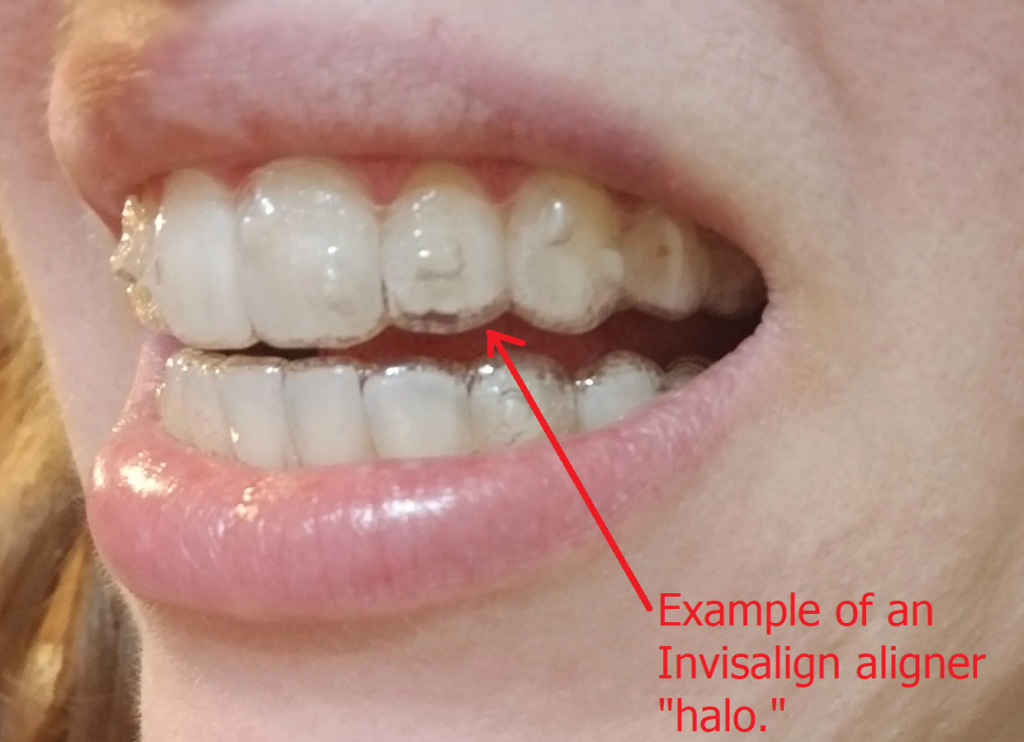Success Stories: How Invisalign Changed Lives and Improved Confidence
Success Stories: How Invisalign Changed Lives and Improved Confidence
Blog Article
Invisalign vs. Standard Dental braces: Which Choice Is Right for You?
When thinking about orthodontic therapy, the selection between Invisalign and standard braces offers several important variables that warrant mindful evaluation. Invisalign supplies a discreet alternative with detachable aligners, while traditional dental braces give a much more noticeable yet reliable solution for extreme misalignment.
Review of Therapy Alternatives

In contrast, standard dental braces contain steel braces and cords that are bonded to the teeth. This method uses continuous stress gradually to achieve alignment. While effective for complicated orthodontic issues, traditional dental braces require normal gos to for changes and can present challenges in keeping oral health due to the difficulty of cleansing about braces and cables.
Both choices have their values, and the selection commonly depends upon specific oral problems, lifestyle preferences, and person conformity. Eventually, speaking with an orthodontic professional is crucial for determining the most ideal treatment plan tailored to specific requirements. Understanding the nuances of each alternative can significantly influence the total success of orthodontic therapy.
Visual Factors To Consider
A substantial element influencing the choice in between Invisalign and standard braces is the visual allure each therapy supplies. Invisalign aligners are crafted from clear plastic, making them virtually unnoticeable when used.
In contrast, conventional braces include steel brackets and wires, which can be much more obvious. While developments in orthodontic technology have led to the advancement of smaller sized brackets and tinted elastics, standard dental braces still preserve a more obvious profile. For some individuals, the presence of dental braces may prevent them from seeking essential therapy.
Inevitably, the choice between Invisalign and standard dental braces may rest on personal choices regarding appearances. Patients who prioritize discernment frequently lean toward Invisalign, while those that are less worried regarding exposure might choose typical braces. Understanding the visual ramifications of each option is important for making an informed decision that lines up with one's way of life and preferences.
Comfort and Convenience

In regards to ease, Invisalign aligners are detachable, making it possible for people to enjoy their favorite foods without restriction and maintain optimal dental health. Cleaning and flossing are simplified, as the aligners can be gotten during these routines, whereas traditional dental braces call for cautious navigating around brackets and wires.
In contrast, standard dental braces necessitate routine adjustments, making them less convenient for those with hectic schedules. Generally, the comfort and ease of Invisalign make it an attractive selection for numerous people seeking orthodontic treatment.
Therapy Duration and Performance
While both Invisalign and conventional dental braces work in fixing dental imbalances, the period of treatment can vary dramatically between the 2 alternatives. Typically, Invisalign therapy can take anywhere from 12 to 18 months, depending on the complexity of the situation. The clear read review aligners function by progressively shifting teeth into their preferred placements, and normal follow-ups with an orthodontist help guarantee progression continues to be on track.
In contrast, standard dental braces often require a longer commitment, normally ranging from 18 months to 3 years. This results from their set nature and the usage of cables and brackets, which can be extra efficient for complicated instances and extreme imbalances (Invisalign). The therapy performance of traditional braces is well-documented, as they permit accurate modifications and higher control over tooth motion
Ultimately, the choice in between Invisalign and typical dental braces might depend upon both the expected treatment duration and the particular dental issues at hand. Consulting with an orthodontist is essential, as they can offer tailored referrals based upon individual demands, making certain the picked technique lines up click resources with desired end results and durations.
Cost Contrast and Insurance Policy Choices
Cost plays a significant duty in the decision-making process for individuals taking into consideration orthodontic therapy, whether choosing Invisalign or traditional dental braces. On average, the cost of Invisalign arrays from $3,000 to $8,000, while conventional braces commonly cost in between $2,000 and $6,000. Factors affecting these costs consist of the complexity of the instance, the duration of therapy, and geographical place.
Many dental insurance coverage strategies give partial coverage for orthodontic treatments, however the specifics can vary commonly. Usually, traditional braces might be a lot more frequently covered by insurance coverage plans contrasted to Invisalign, which some insurance firms categorize as a cosmetic procedure.
Furthermore, a number of orthodontic methods use adaptable settlement plans, making both treatment choices much more easily accessible. People need to ask about potential financing options and discounts for upfront payments. Evaluating the total cost, including insurance benefits and settlement strategies, is crucial for making an educated choice that straightens with both visual preferences and budget factors to consider.
Verdict
In recap, the choice between Invisalign and traditional dental braces rests on several factors, consisting of aesthetic choices, comfort, therapy period, and cost. Invisalign supplies a discreet, removable option that promotes oral health and nutritional flexibility, while standard braces may be better for intricate dental problems and often come at a reduced rate point. Inevitably, consultation with an orthodontist is necessary to assess individual scenarios and establish the most proper therapy option for accomplishing ideal oral placement.
When considering orthodontic treatment, the choice in between Invisalign and typical braces presents several essential aspects that warrant cautious evaluation.Comparing Invisalign and traditional dental braces discloses unique treatment options for orthodontic adjustment.While both Invisalign and typical dental go braces are reliable in fixing oral misalignments, the duration of treatment can vary considerably between the 2 alternatives.Expense plays a considerable function in the decision-making process for individuals considering orthodontic therapy, whether choosing for Invisalign or standard dental braces.In summary, the choice in between Invisalign and typical dental braces hinges on several elements, including visual choices, comfort, treatment period, and expense.
Report this page